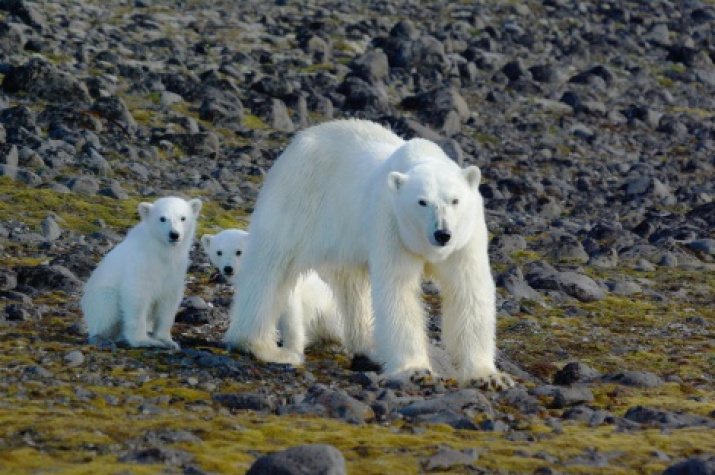A census of polar bears living in the territory of the Russian Arctic National Park is planned in August 2015 - for the first time in 10 years.
The monitoring will be carried out by Russian scientists together with their Norwegian colleagues.
The Polar Bear is the largest land predator. There are are up to 25,000 individuals in the world. They form 19 populations in the circumpolar zone on the territory of Russia, Canada, the United States (Alaska), Norway (Svalbard) and Denmark (Greenland). The main part of the Barents Sea subpopulation of polar bears live in the territories of the Russian Arctic National Park and "Franz Josef Land" Federal Reserve.
The polar bear is listed in the Red Book of the International Union for Conservation of Nature, the United States, Canada, the Russian Federation. The polar bear has been listed as Threatened by USA and as Vulnerable by Canada and Russia.
The last census of the animals on the islands of Novaya Zemlya, Franz Josef Land, and Alaska-Chukotka was conducted in 2004. According to aerial surveys there were about three thousand individuals in the region then.
- Repeated surveys are planned for 2015, - says deputy director for science of the Russian Arctic National Park Maria Gavrilo. - They will cover the north of the Barents Sea, from Spitsbergen at the east to Franz Josef Land along the ice edge. The animals live in this region.
Again as in 2004, aerial surveys will be used to estimate the population. This will allow us to accurately compare the data of both studies.
- Ten years ago, we applied quite progressive methods. The important thing is to use the same method and at the same conditions of the annual cycle of bear - said Maria Gavrilo.
The scientists believe that the main threats to the polar bear is global warming and the the Arctic ice melting - the main habitat of the predator. According to some estimates, its area has decreased by 25% in recent years. This led to migration of seals, so bears regularly preying on these animals began to starve.
A particularly difficult situation is in the north of Novaya Zemlya, says Gavrilo. In 10 years a group of polar bears could have died from hunger or migrated to other areas following the seals. It will be possible to answer these questions after the results of the population estimates.
Dr.Sci.Biol, independent expert on the polar bear, veteran polar explorer of Russia Nikita Ovsyanikov comments:
- Aerial surveys do not always give a true picture of the population size. In order to obtain data on its status, it is necessary to carry out a long and detailed ground-based observations. The information researchers obtain by aerial surveys does not consider the so-called disturbance factor. But we know perfectly well that it plays a very important role in the life of any animal.

